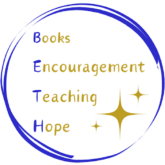A Word with Beth — I Can Really Get INTO This Grammar Problem!
The Owl heard something on the radio the other day that got his feathers in a twist. To straighten them out again, I said I’d do a post about it. He thought it would be best if I used my own example, though. So, here’s my example. A notice appeared on the school bulletin board: “Whoever ran the gym teacher’s socks up the flagpole should turn himself or herself into the principal immediately.” There’s a problem with that sentence. Do you see what it is? You’ve likely taken note of the capitalized word in the post title, which is a rather blatant hint. The last time I checked, it takes quite a while to become a principal. It isn’t going to happen immediately. We know the student isn’t being asked to transform him or herself into the principal, but that’s what the wording implies. When someone reports to authorities, they don’t turn themselves into the authorities, they turn themselves in to the authorities. There’s a subtle difference, but it’s a difference. Turning something into something else implies transformation or movement. The caterpillar turned into a butterfly. or The car turned into the driveway. (This goes for any verb that goes with into or in, of course, not just ‘turn.’) The salient part of the intent of the example sentence is that the culprit should turn him or herself in. Then it goes on to say to whom the person should report. When in doubt, take the last part of the sentence away and see how it looks and sounds. Will he turn himself in? Or will he turn himself into? This post at Writer’s Digest suggests an easy trick for remembering which to use. Quoting the post: “‘Into’ usually answers the question ‘where?’ while ‘in to’ is generally short for ‘in order to.’” Onto can cause similar problems, although various sources that I consulted suggest that it is becoming more prevalent in American English to use onto where previously a speaker or writer would have used on to. Still, saying “We will drive onto New York this evening” evokes an image of a car perched atop the Empire State Building, having driven right up onto the city. But if you say “We will drive on to New York this evening,” it suggests that your journey will continue to New York. There’s a good test for onto and on to at the Writing Explained blog. Quoting the post: “A good trick to remember on to vs. onto is to mentally say “up” before on in a sentence. If it still makes sense, then onto is probably the correct choice.” By now I suspect you could really get into moving on to other things! If you have a question for the Grammar Owl and me, please mention it in the comments, or send an email to mail (at) flubs2fixes (dot) com. We thrive on questions! READER SURVEY: If you haven’t already completed my Reader Survey, please take a couple of minutes to read the post linked here and to take the survey. Your thoughts and suggestions will be very valuable to me as I make plans for next fall’s blogging. Thank you!
